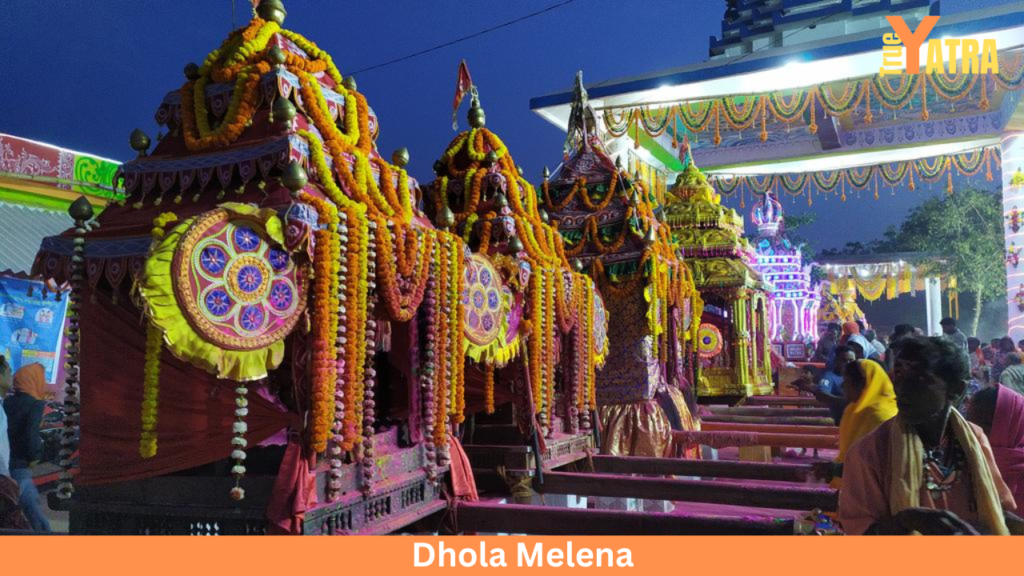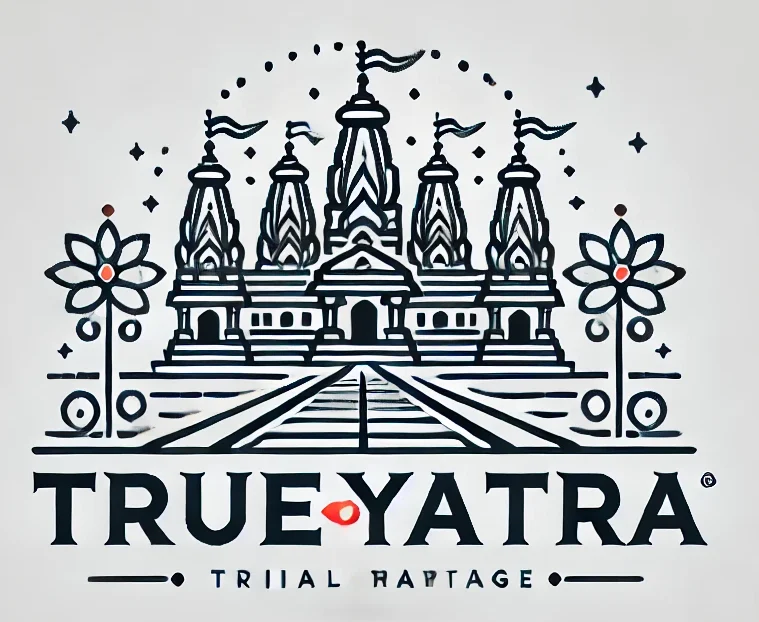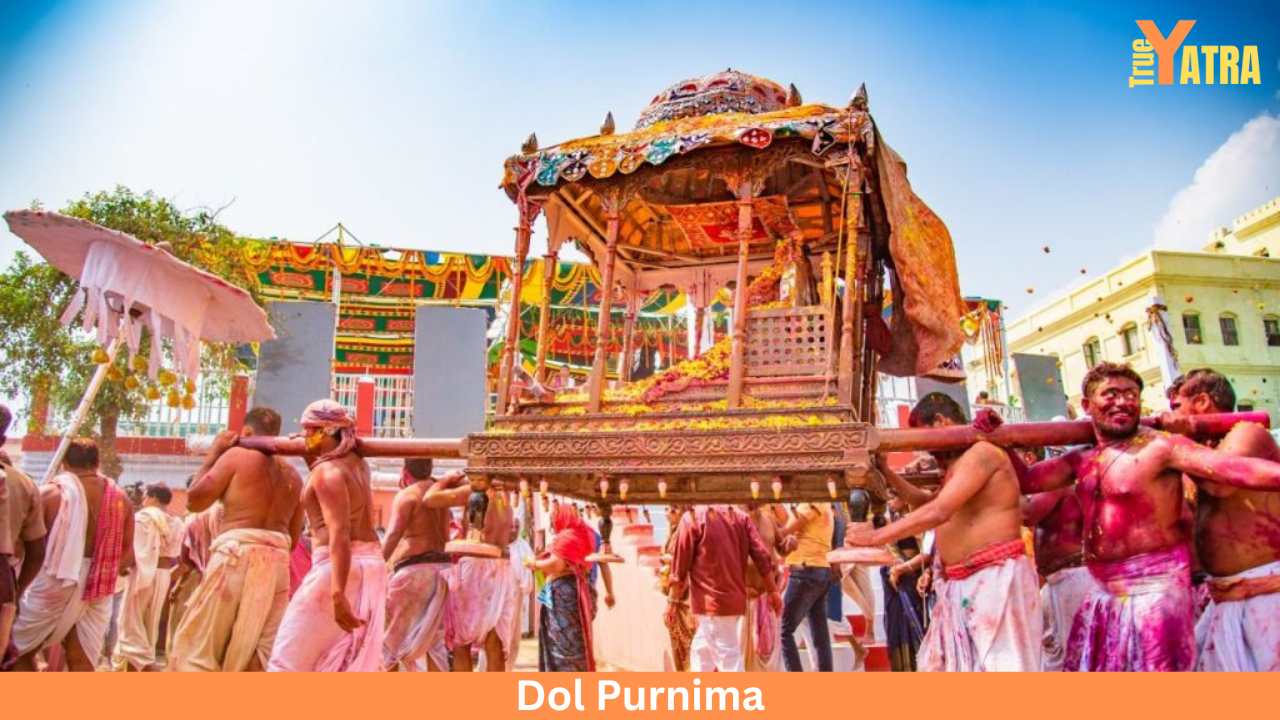Dol Purnima or Holi Festival is also called the “colors of festivals” and is celebrated worldwide. It is a famous Hindu festival that is celebrated in the states of West Bengal, Odisha, and Assam. Everyone gathers together to enjoy the burst of colors, joy, and sweets.
It is the festival where people forget their differences and come together and diversify into the joy of colors. The festival is also symbolized for love, friendship. Its unique traditions, cultures, and rituals make this festival different from other festivals and hold a special cultural and traditional significance among all the people.
It is celebrated on the full moon day of Phalgun Month which is in February or March. The festival marks the arrival of Spring and the end of Winter. In West Bengal and Odisha, the festival is typically celebrated for six days long. On the first day of Holi, it is also called “Holika Dahan” or “Choti Holi”.
On this day people set bonfires to celebrate the victory of God over evil powers. The next day is called Dol Yatra and the festival ends with Dol Purnima.
Dol Purnima is a very famous and unique festival in Harirajpur, Odisha. They celebrate Dol Melana. They organize a big fair and almost 28 villages take part in that festival.
History of Dol Purnima/Holi Festival
There are so many tells on the history of Dol Purnima. According to some theories, on the day of Dol Purnima Lord Krishna express his feelings of love to Radha. Krishna is said to have applied “Abir” to Radha.
Therefore, Holi is celebrated as a sign of love. People apply Abir or color to other people to show their unitedness, friendship, and love.
There are some other stories on Holi. Some said, on the day of Dol Purnima Krishna murdered the demon Mesha and burnt her into ashes. Others said, on the day of Dol Purnima Prahalad, who is a follower of Lord Vishnu had murdered evil Holika, and demise her in the fire. So, Holi is also celebrated to show the victory of God over evil or Demon.
For Bengalis, the day is also celebrated as the birthday of Chaitanya Paha Prabhu.
Why Dol Purnima | Holi is Celebrated
It is one of the famous Hindu festivals, which is celebrated for both traditional and cultural reasons.
- Holi means the arrival of Spring and the end of Winter. This time again flowers, and leaves start to blossom. Trees again start growing. Spring welcoming the season of a new beginning. People celebrate the beginning of a new season.
- Holi is also celebrated to show the joy of the victory of God over evil powers. So, the celebration is begun with a bonfire which is called “Nerapora” where people celebrate the victory of Lord Krishna over demons.
- Holi is also celebrated to commemorate the love of Lord Krishna and Radha. On this day, Krishna playfully applied colors to Radha and her companies. So, on the day of Dol Purnima, people first apply the colors on God and then start the festival.
- People also celebrated Holi to show their social harmony. This is the festival where people from different backgrounds, and social standards gathered together and devotes to the burst of colors. So, the festival is also celebrated to embrace the spirit of togetherness.
Who started Dol Purnima/ Holi Festival?
According to mythology, this is the day when Lord Krishna first applied colors to Radha to express his feelings. It is also said that poet Rabindranath Tagore first started Dol Utsav at Biswa-Bharati University.
Harirajpur: Dol Melana
Dol Purnima or Holi is a very unique festival of Harirajpur, Odisha. Harirajpur is a village located in Krodha district. It is 20km away from Bhubaneswar. The festival is started in 1637 by two villagers named Babaji Gobardhan Das and Nitei Sahu.

They celebrate annual Holi festivals after 5 to 10 days of Dol Purnima and continue for up to one month. This is a four days event. In this melana five major Shiva temples take place. So, this is also called Paanchu Dola Festival.
They carried deities from 80 villages in the procession. Fireworks are another significant celebration here. Somnath Dev is the presiding deity, the idol is taken out from the temple by decorated Bimana to the Melana ground on the first day.
People sing “Sankirtan” and also perform “Ghoda Nacha”, a traditional dance form. The procession starts at 10 pm and ends at 5 am.
Highlights of Dol Purnima/Holi Festival:
Dol Purnima is celebrated with very much joy and enthusiasm in the north Indian states.
- Festival of Colors: The use of colors as a symbol of love, and friendship is a uniqueness of this festival. People from all ages, different castes, gathered together and demesne themselves into the divine of colors.
- The day before the Dol Purnima, people set bonfires to celebrate the triumph of God against evil powers.
- In the Dol Yatra, Lord Jagannath is worshipped as Dolgovinda. People carry out idols of Lord Jagannath, Lord Balarm, and Devi Subhadra in chariots and organize a procession. And everyone takes part in these processions. This procession continues for four days. which is known as Chacheery.
- They also organize a competition for decorating Vimanas, the chariots in which deities are carried.
- Cultural celebration: Cultural celebration of dance and music are part of this festival. Along with the colors, people also dance and sing together. The atmosphere is filled with joy, colors, and excitement. Dol Dance is a major significant cultural part of the festival. In this dance, women danced in traditional attires.
- In Odisha, Harirajpur’s Dol Melana is a unique celebration. Harirajpur is a village of Krodha.
- Holi is a major celebration in Iskcon temple, Odisha. Holi is also celebrated at many places like Iskcon Patia, Officer’s Club, Gopinath Jew Temple, and Jagannath Temple. That time because of the rush of people all hotels, and resorts become fully packed.
- Swing Fest: It is another major significant ritual of the Dol Yatra. idols of Lord Krishna and Radha are put on Chariots. And then swung from one to another end.
- Traditional Sweets: Holi is also significant for its special type of traditional sweets. Without Thandai or Lassi, the Holi celebration is incomplete. Not only this, Gujiya and Malpua are also popular Holi delicacies. They also offer Bhog to deities.
Dol Purnima 2023 | Holi festival 2023
In 2023 Dol Yatra was celebrated on the 7th of March Tuesday. And Holi was celebrated on the 8th of March.
Dol Purnima 2022 | Holi festival 2022
In 2022, Dol Yatra was celebrated on 18th March, Friday in the states of West Bengal, Odisha, and Assam.
Dol Purnima 2024 | Holi festival 2024
In 2024, Dol Purnima or Holi will be celebrated on the 24th of March. The tithi will begin at 09:54 AM on Mar 24, 2024, and the Purnima tithi will end at 12:29 PM on Mar 25, 2024.
How to participate in Dol Purnima | Holi
People from different backgrounds participate in Dol Purnima. It is a memorable experience. There are so many rituals through which people can participate in the Holi. People wake up and offer prayer to Lord Krishna, by applying Abir and devoting themselves to the festive.
- Choti Holi: It is celebrated the day before the Holi. People set bonfires with dry leaves and branches. It is symbolized as the victory of God.
- Swing idols of Lord Krishna and Radha: On the day of Dol Purnima, people join the divine experience of swinging of idols of Lord Krishna and Radha. People also dance and sing during this time to show their faith in God.
- Throwing waters and colors: People then join the playing with others by applying colors, and water.
- Processions: After that people can join processions. They are dressed in colorful clothes and carry the idols of Lord Krishna and Radha.
- Offers Sweets and Thandai: Thandai is very famous in Dol Purnima. It is a mixture of milk, dahi, almonds, etc. Another special dish of Holi is Gujiya. Which is a famous sweet of Odisha, West Bengal. It can be made with Kheer, Kaiju, and sugar. People offer each other these special dishes.
- Some people also offer prayers to Lord Narayan, to bring happiness.
How to Reach Harirajpur
Dol Purnima or Holi is very famous in Harirajpur. They celebrate Dol Purnima for 6 days long. It is located at Delanga block of Puri district. Harirajpur is well-connected with airports, Railways, and roads.
How to reach Harirajpur by Air
Biju Patnaik International Airport is located near the city. There are lots of international and domestic flights running from this airport. One can take the bus, or taxi from the airport to reach any place in the city.
How to reach Harirajpur by Train
The nearest railway station is (KUR)KHURDA ROAD JN, which is 1.53km away. There are regular, superfast, or special trains from the station to different cities.
How to reach Harirajpur by Bus
From Bhubaneswar, it takes 51min by road. There are so many buses, private and public cabs, and autos available from Bhubaneswar to Harirajpur.
FAQs- Frequently Asked Questions
What is the significance of Dol Purnima?
The belief claims that Lord Krishna showed Radha his love on this day. As a result, people parade their adorned idols in a swinging palanquin to commemorate Krishna and Radha’s reconciliation.
What is the purpose of Dolyatra?
The Bengali year’s last event is known as Dolyatra. Since ancient times, people have cherished the unbreakable love that Lord Krishna has for Radha, his favorite Gopi. It is said that Lord Krishna first showed his love for Radha during the Dolyatra festival.
What distinguishes Dol Purnima and Holi?
Although Holi and Dol represent the same event, they each have their own unique Holi narrative according to Hindu mythology. In contrast to Bengali Dol, which is centered around Krishna and Radha, Holi in north India is based on the myth of Prahlad, a Vishnu avatar. Krishna is a manifestation of Vishnu as well.
What are the origins of Dol Utsav?
The event, which was started by Nobel Prize-winning poet Rabindranath Tagore at Visva-Bharati University in Santiniketan, West Bengal, honors and celebrates spring and its many colors. Commonly referred to as Dol Utsav, it is typically held on the day of Dol Purnima (the full moon day of Falgun), which falls a day before Holi.
When does Dol Purnima take place in 2023?
The tithi for Dol Purnima began on March 6 at 4:17 am and will finish on March 7 at 6:09 pm, according to Drik Panchang.

